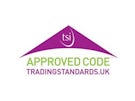The Chancellor has delivered his Budget Statement in which he outlined measures clearly aimed at supporting those who work, save and invest.
ISAs
The ISA and Junior ISA allowances will remain at £15,240 and £4,080 respectively for the tax year 2016/17. The ISA allowance will increase to £20,000 from April 2017. No mention was made of the Junior ISA allowance beyond 2016/17.
Lifetime ISA
The government announced a new ‘Lifetime ISA’ to help those under 40 save flexibly for the long term. This will be in addition to existing Cash, Stocks & Shares, and Innovative Finance ISAs, and will form part of the overall annual ISA allowance.
Lifetime ISAs represent a real opportunity for younger people to save and will enable parents and grandparents to gift money that can assist with intergenerational planning.
Contributions to a Lifetime ISA
From April 2017, people aged 18 or over will be able to open a Lifetime ISA and contribute £4,000 personally and receive a 25% ‘bonus’ (equivalent to 20% tax relief), making a total contribution of £5,000 pa.
There are also a few additional rules:
- Any contributions to a Lifetime ISA will be within the overall £20,000 ISA contribution limit.
- The government bonus will only be paid on contributions of up to £4,000 per tax year but contributions up to the annual ISA allowance will be permitted.
- Individuals will receive the government ‘bonus’ on contributions made until they reach 50.
- Unlike tax relief on pensions, the ‘bonus’ on ISAs will not be payable until the end of the tax year.
- Individuals will be able to transfer savings from other ISAs into their Lifetime ISA. In line with existing rules, transfers from previous years’ ISA contributions do not affect that year’s £20,000 overall ISA limit. During 2017/18 only, additional transfers may be made and matched from the Help to Buy ISA.
Withdrawals from a Lifetime ISA
Funds can be withdrawn to buy a first home, located in the UK and worth up to £450,000, after 12 months without any tax charges. In addition, funds can be withdrawn without any tax charges after age 60 for any purpose (e.g. for retirement planning).
It will be possible to withdraw funds before age 60 for other reasons, but the government bonus and any growth on the bonus will be returned to the government, together with a 5% charge.
Where people choose to withdraw savings from the Lifetime ISA to make a first home purchase:
- They will be able to withdraw up to 100% of their Lifetime ISA balance, including the government bonus.
- If they are buying their first home with someone else, they can each use their Lifetime ISA.
- The detailed rules will be based on those for the Help to Buy ISA, including that the withdrawal must be for a deposit on a property for the first time buyer to live in as their only residence and not buy-to-let.
- They will inform their ISA manager of the purchase, who will claim any additional bonus due from HMRC, and the withdrawal will then be paid directly to the conveyancer. If a purchase falls through after a withdrawal has been made then the funds will be returned to the same ISA manager by the conveyancer and will not count against the annual contribution limit.
Treatment on death
The Lifetime ISA will have the same Inheritance Tax treatment as all other ISAs. Upon the death of the account holder, the funds will form part of the estate for Inheritance Tax purposes. Their spouse or civil partner can also inherit their ISA tax advantages and will be able to invest as much into their own ISA as their spouse used to have, on top of their usual allowance.
Pensions
Pensions tax relief
Although further changes to the taxation of pensions were anticipated, the tax treatment of pension contributions remain unaffected.
The key highlights are as follows:
- The planned reduction in the Lifetime Allowance to £1m and the introduction of the Tapered Annual Allowance for individuals with ‘adjusted income’ over £150,000 will proceed as previously announced.
- It was confirmed that 25% tax-free cash will not be abolished.
- It was confirmed that that salary sacrifice for pensions will continue to receive Income Tax and National Insurance relief.The ‘Lifetime ISA’ was introduced as an additional savings vehicle for house purchase or retirement.
Pension freedom amendments
To support the pension freedoms reforms introduced last year, the government has made some technical amendments to ensure that these are working as intended, including by:
- Aligning the tax treatment of serious ill-health lump sums with lump sum death benefits, so that they can be paid tax-free when someone aged under 75 has less than a year to live but has already accessed their pension.
- Making serious ill health lump sums taxable at an individual’s marginal rate when paid in respect of individuals aged 75 and over.
- Legislating to convert dependants’ flexi-access drawdown accounts to nominees’ accounts when dependants turn 23, so they do not have to take their funds as a lump sum taxed at 45%.
Taxation
Capital Gains Tax
The government will reduce the higher rate of Capital Gains Tax from 28% to 20% and the basic rate from 18% to 10% for disposals made on or after 6 April 2016. The 28% and 18% rates will continue to apply for chargeable gains on residential property.
The government will extend Entrepreneurs’ Relief to external investors in unlisted trading companies. The new rules will apply to newly issued shares purchased on or after 17 March 2016, providing they are held for a minimum of three years from 6 April 2016, and subject to a separate lifetime limit of £10 million of gains.
There are no other changes or restrictions in the Budget to the application of Entrepreneurs’ Relief on business sales.
Stamp Duty on buy-to-let and second homes
The government confirmed that it will proceed with the proposed increase to Stamp Duty Land Tax on additional properties from 1 April 2016.
Other key announcements
Income Tax Personal Allowances
The Income Tax Personal Allowance will increase to £11,000 from 6 April 2016, and £11,500 from 6 April 2017. The higher rate tax threshold will rise to £43,000 from 6 April 2016, and £45,000 from 6 April 2017. The Upper Earnings Limit for National Insurance Contributions will remain aligned with the higher rate tax threshold.
Class 2 National Insurance contributions for the self-employed will be abolished from April 2018.
Corporation Tax
Building on Summer Budget, the government announced a further reduction to the rate of Corporation Tax to 17% from April 2020.
Increase in Insurance Premium Tax
The Chancellor announced a 0.5% increase in Insurance Premium Tax to 10%, which will drive up the cost of insurance from 1 October 2016. The increase will affect both individuals and companies. Where certain benefits are offered by employers, employees may incur an increase in the P11D value of their benefits.
Tax avoidance
The government has reaffirmed its ongoing commitment to tackle aggressive tax-avoidance schemes, including disguised remuneration.
Tax year-end planning
Overall, nothing in the Budget reduces the need for careful consideration of how to structure your assets in a tax-efficient manner; and with only a few weeks left in the current tax year, make sure you are maximising the opportunities available.
More information
Should you wish to discuss any of the detail contained in this note, please do not hesitate to get in touch.
The value of an investment with St. James’s Place will be directly linked to the performance of the funds selected and may fall as well as rise. You may get back less than the amount invested.
The levels and bases of taxation, and reliefs from taxation, can change at any time and are dependent on individual circumstances.
Contact
Simon Higginbotham DipPFS Cert CII (MP)
Wealth Manager, Franklyn Financial Management Limited
Senior Partner Practice of St. James’s Place Wealth Management
Tel: 01260 291825 or 07718 753228
Email: Simon.Higginbotham@sjpp.co.uk
The Partner Practice represents only St. James’s Place Wealth Management plc (which is authorised and regulated by the Financial Conduct Authority) for the purpose of advising solely on the Group’s wealth management products and services, more details of which are set out on the Group’s website www.sjp.co.uk/products. The ‘St. James’s Place Partnership’ and the titles ‘Partner’ and ‘Partner Practice’ are marketing terms used to describe St. James’s Place representatives.











